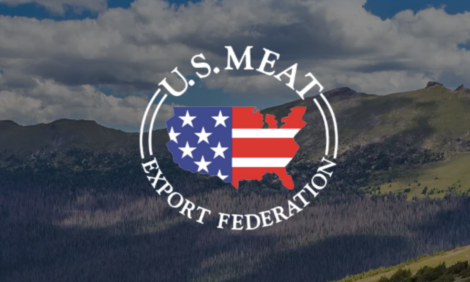



Canadian farmers face serious feed shortages
Drought and transport strains are to blame
Canadian farmers say they are just days away from running out of feed for cattle, due to severe drought last summer damaging crops needed to fatten them over winter and transportation bottlenecks, reported Reuters.
The drought devastated Prairie pastures and has now forced feedlots in Alberta, the main cattle-producing province, to buy more US corn. Moving it north of the border is difficult and costly, however.
Canadian Pacific Railway Ltd, the main corn shipper to Western Canada, has struggled to keep up with demand during frigid weather. COVID-19 vaccine mandates for cross-border truckers threaten to further disrupt the supply chain.
The feed shortage could depress profits for feedlots, the farms that raise cattle to slaughter weight, but it may not raise retail beef prices as feedlots have incentive to sell their cattle to packers as quickly as possible, increasing meat supply, said Brian Perillat, senior analyst at CanFax.
Jacob Bueckert, owner of a 20,000-head feedlot near Warner, Alberta, estimates that he has five days' supply of feed on hand, when he normally has 14-30 days' worth.
"We don't have any buffer. It's scary," he said, adding that he is frustrated by delayed rail shipments.
"Excuses aren't going to feed the cattle."
.jpg)
Many feedlot owners are getting by with contributions from neighbors who have enough feed, Bueckert said. But it is not easy to find surplus grain - feedlots are fuller than usual after the drought led ranchers to sell more cattle to feedlots last fall, he said.
If packing plants are full anyway, some feedlots may ration their scarce supplies over a longer period of time and delay the cattle from reaching slaughter weight, but this adds expense, said Janice Tranberg, chief executive of the Alberta Cattle Feeders' Association. She estimates that three-quarters of the province's feedlots, which fatten 1.5 million head, face shortages.
Canada is the world's eighth-biggest beef and veal exporter. In the United States, the No. 3 beef exporter, cattle are geographically dispersed and feed supplies are more readily available. Still, the number of cattle placed in US feedlots rose 6% in December from a year ago after drought dried up pastures.
US corn shipments to Canada totalled 1.085 million tonnes from 1 September through 13 January, nearly six times the five-year average, according to U.S. Department of Agriculture data. Some 2.1 million tonnes have been sold but not yet shipped.
Canadian Agriculture Minister Marie-Claude Bibeau said on Twitter that she raised the feed shortage on Saturday with Canadian Pacific.
In a statement, CP said it is committed to supplying feed to feedlots despite the challenges, but it did not say if the railway will take additional steps.
CP moved 8,100 carloads of US corn into Alberta last year, more than 13 times the previous year's volume, a company executive said last week. Shipments of distillers' dried grains, another feed product, jumped 300%.
Hog farmers fear their feed constraints may also worsen with some truck shipments of US soybean meal already cancelled, said Cam Dahl, general manager of farmer group Manitoba Pork. He attributed the cancellations to vaccine mandates reducing the pool of drivers.
Source: Reuters


